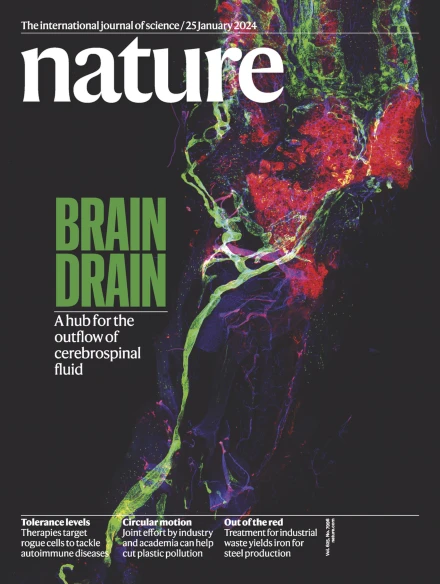Subnanosecond flash memory enabled by 2D-enhanced hot-carrier injection
IF 50.5
1区 综合性期刊
Q1 MULTIDISCIPLINARY SCIENCES
引用次数: 0
Abstract
The pursuit of non-volatile memory with program speeds below one nanosecond, beyond the capabilities of non-volatile flash and high-speed volatile static random-access memory, remains a longstanding challenge in the field of memory technology1. Utilizing fundamental physics innovation enabled by advanced materials, series of emerging memories2–5 are being developed to overcome the speed bottleneck of non-volatile memory. As the most extensively applied non-volatile memory, the speed of flash is limited by the low efficiency of the electric-field-assisted program, with reported speeds6–10 much slower than sub-one nanosecond. Here we report a two-dimensional Dirac graphene-channel flash memory based on a two-dimensional-enhanced hot-carrier-injection mechanism, supporting both electron and hole injection. The Dirac channel flash shows a program speed of 400 picoseconds, non-volatile storage and robust endurance over 5.5 × 106 cycles. Our results confirm that the thin-body channel can optimize the horizontal electric-field (Ey) distribution, and the improved Ey-assisted program efficiency increases the injection current to 60.4 pA μm−1 at |VDS| = 3.7 V. We also find that the two-dimensional semiconductor tungsten diselenide has two-dimensional-enhanced hot-hole injection, but with different injection behaviour. This work demonstrates that the speed of non-volatile flash memory can exceed that of the fastest volatile static random-access memory with the same channel length. A two-dimensional Dirac graphene-channel flash memory based on a two-dimensional-enhanced hot-carrier-injection mechanism that supports both electron and hole injection is used to make devices with a subnanosecond program speed.


通过二维增强型热载流子注入实现亚纳秒闪存
追求程序速度低于1纳秒的非易失性存储器,超越非易失性闪存和高速易失性静态随机存取存储器的能力,仍然是存储器技术领域的一个长期挑战。利用先进材料实现的基础物理创新,正在开发一系列新兴存储器2,3,4,5,以克服非易失性存储器的速度瓶颈。作为应用最广泛的非易失性存储器,闪存的速度受到电场辅助程序低效率的限制,报道的速度6,7,8,9,10远低于1纳秒。在这里,我们报道了一种基于二维增强型热载子注入机制的二维狄拉克石墨烯通道闪存,支持电子和空穴注入。Dirac通道闪存显示出400皮秒的程序速度,非易失性存储和超过5.5 × 106周期的耐用性。结果表明,薄体通道可以优化水平电场(Ey)分布,并且在|VDS (| = 3.7 V)下,改进的Ey辅助程序效率将注入电流提高到60.4 pA μm−1。我们还发现二维半导体二硒化钨具有二维增强的热孔注入,但具有不同的注入行为。这项工作表明,在相同的通道长度下,非易失性闪存的速度可以超过最快的易失性静态随机存取存储器。
本文章由计算机程序翻译,如有差异,请以英文原文为准。
求助全文
约1分钟内获得全文
求助全文
来源期刊

Nature
综合性期刊-综合性期刊
CiteScore
90.00
自引率
1.20%
发文量
3652
审稿时长
3 months
期刊介绍:
Nature is a prestigious international journal that publishes peer-reviewed research in various scientific and technological fields. The selection of articles is based on criteria such as originality, importance, interdisciplinary relevance, timeliness, accessibility, elegance, and surprising conclusions. In addition to showcasing significant scientific advances, Nature delivers rapid, authoritative, insightful news, and interpretation of current and upcoming trends impacting science, scientists, and the broader public. The journal serves a dual purpose: firstly, to promptly share noteworthy scientific advances and foster discussions among scientists, and secondly, to ensure the swift dissemination of scientific results globally, emphasizing their significance for knowledge, culture, and daily life.
 求助内容:
求助内容: 应助结果提醒方式:
应助结果提醒方式:


